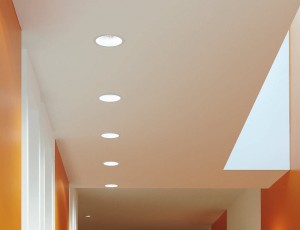 LED lighting technology has advanced over the last decade so much that it is not very far from becoming mainstream in lighting design for [city] business or residential purposes. In many cases, LEDs are the emerging standard for energy efficiency, and the fixtures are no longer reserved for high end projects with huge budgets.
LED lighting technology has advanced over the last decade so much that it is not very far from becoming mainstream in lighting design for [city] business or residential purposes. In many cases, LEDs are the emerging standard for energy efficiency, and the fixtures are no longer reserved for high end projects with huge budgets.
While LED lighting has long been the more energy efficient option, it has not always been the option to bring in the most light throughout [city]. The fixtures, in general, use less wattage to achieve brightness similar to incandescents, but it has been more difficult to achieve the same quality of light with the LED fixtures. A lot of improvement had to be implemented with the technology to create brighter options, and these newer products are tested against the older standards to see how they match up.
In the case of downlighting (or recessed lighting), much of the more recent series of LED options are actually brighter than their incandescent and CFL predecessors. In a controlled environment including lit boxes cut to the exact same specifications, the brightness of the older style bulbs were tested against the light emitted from the new, LED retrofitted options. More than 10 different options of LED fixtures were tested, and all of them actually worked out to be brighter than the other options on the market. The LED options worked as well as incandescents that ranged between 60 and 100 watts.
When used at a normal ceiling height, the retrofitted LEDs, which nearly all meet the EnergyStar criteria, were just as effective as the other options. Some were substantially more effective. According to the United States Department of Energy, there shouldn’t be a noticeable detractor between the LEDS and incandescents or CFLs in [city].
The biggest different between the retrofitted LEDs and the newer options is actually a major positive for LEDs. Though the residential and commercial retrofitted units cost more out of pocket, they are substantially less expensive today than they were even 5 years ago. The return on investment is substantial, and most [city] businesses see the fixtures pay for themselves within one to two years.
If you think about it from the perspective that lighting makes up at least 40% of a current [city] energy bill, business are spending a significant amount each month to keep the lights on. LED fixtures can cut down the portion of the bill made up of to-be-replaced fixtures by up to 80%. They often use about 25 percent of the wattage of more traditional lighting solutions, and they’re now proven, in many cases, to offer better light quality.
After two years of ownership, the fixtures have not only paid for themselves, but [city] businesses get to reap the benefits of major drops in electricity bills.
LEDs are better for the environment because they don’t utilize harmful chemicals like older style lighting can, and they can be safely recycled after their often 12-20 year life span.
If you think it’s time to make the change, EEPros is always available to help you find the most cost-effective solution for your needs.

![GE LED Lighting Solutions in [city] [city]](https://8blocks.s3-us-west-1.amazonaws.com/eepros/2020/social.jpg)
![The 4 Most Common Mistakes Business Owners Make When Switching to LED [city]](https://eepros.com/wp-content/uploads/2019/07/conference-room-768441_640-300x200.jpg)
![What Is Color Temperature and Why Should You Care It When Buying LEDs? [city]](https://8blocks.s3.amazonaws.com/eepros/blog-images/2016/06/dining-room-332207_640-300x200.jpg)
![FACT: LEDs Are Better than Incandescent Bulbs… and Here’s Why [city]](https://8blocks.s3.amazonaws.com/eepros/blog-images/2015/03/cflvsled-300x200.jpg)